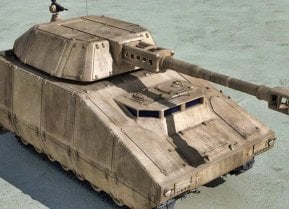The Nock Gun: When You Need Seven Barrels to Get the Job Done
By 1804 the Nock gun was totally removed from service; it hadn’t been used for very long.
In the age of single-shot muskets and early rifles, the rate of fire was fairly low. Fire a shot, then reload, and reload slowly at that. Over time there were a number of attempts to increase the effectiveness of weapons. One such example is the Nock gun, which following a volley gun concept offered seven shots instead of a single one.
Volley guns are weapons with multiple barrels that fire all at once. In the musketoon era of the 1700s, volley guns had anywhere from nine to 20 barrels. These weapons were often large and, like cannons, needed to be toted by carriages. Volley guns proved to be expensive and difficult to manufacture. A cannon firing grapeshot tended to be just as effective and nowhere near as expensive, and ultimately more versatile.
ENTER THE NOCK GUN
Your traditional volley gun was a fixed weapon, too large to be man-carried. The Nock gun, however, was a man-portable volley gun. This seven-barreled weapon featured a stock and could be shouldered and fired by the average soldier or sailor. The gun’s seven barrels were 20 inches long, and the weapon weighed between 12 and 13 pounds.
Designed by James Wilson, a British engineer, the Nock gun was envisioned as a weapon tailored toward the infantry. He submitted it to the British Board of Ordnance, but the Board didn’t share his infantry ideal. Instead, the Board imagined the weapon to be extremely handy for the Royal Navy, as sailors positioned in the crow’s nest could fire seven rounds at once down on the tightly packed group of enemy soldiers.
Wilson engineered the weapon but did not own a production company, so the contract was given to Henry Nock, a respected firearm manufacturer of the era.
Nock’s name would be stamped on the guns, and thus, they earned his name. The weapon used six barrels grouped around a central barrel. The barrels were .50 caliber, but .46 caliber ammunition was issued with the gun. This practice was typical of the day firstly because smaller projectiles were faster to load, and secondly because black powder would often coat the barrels and shrink their internal bore.
Initial models were rifled, but rifled guns of the era were slow to reload and expensive to produce. Also, the accuracy of a seven-barrel gun seemed suspect, to begin with, so they ditched the rifling.
The Royal Navy purchased 500 of the guns and issued them out to its sailors and marines.
THE NOCK GUN IN ACTION
Five hundred Nock guns sound like a lot, but the British had the world’s most powerful Navy, so it was a relatively small order. There aren’t many reports on the performance of the gun. This era was marked by seafaring combat in which British sailors could be facing off with Spanish and French ships, pirates, and more. We know these guns were in Admiral Howe’s fleet during the Great Siege of Gibraltar in 1782 and we know that the Nock gun was at least fired during the siege, but we don’t know much else about its role in the battle.
The gun had several problems. First, predictably the recoil from seven barrels firing all once was brutal; it was supposedly enough to break a bone and dislocate shoulders. This resulted in reducing the service laid from 2.5 drams of rifle powder to 1.5 drams. Still, the gun bucked and kicked.
There was also a concern regarding the massive muzzle blast. The sparks, hot gas, and burning wads could set sails and rigging on fire. It’s not recorded if this ever happened, but it was a fear.
Another practical issue is that the weapon would occasionally fail to fire all the barrels. The center barrel had vents to the other six barrels to ignite them, but this process wasn’t always reliable. Further, when some barrels failed to fire, there was a chance they would be reloaded anyway, leaving the shooter with a dangerous double load.
THE SECOND MODEL
A second model Nock gun was produced. This smaller .32 caliber version aimed to reduce recoil, but its recoil was still found to be too much. Its range was also shorter, but ship fighting was tight and close, so a reduced range didn’t seem like an issue.
By 1804 the Nock gun was totally removed from service; it hadn’t been used for very long. After the Royal Navy ditched the gun, Henry Nock attempted to sell it on the sporting market, but it didn’t succeed there either. The Nock gun theoretically was great, but in practice failed to impress.
About the Author
Travis Pike is a former Marine Machine gunner who served with 2nd Bn 2nd Marines for 5 years. He deployed in 2009 to Afghanistan and again in 2011 with the 22nd MEU(SOC) during a record-setting 11 months at sea. He’s trained with the Romanian Army, the Spanish Marines, the Emirate Marines, and the Afghan National Army. He serves as an NRA certified pistol instructor and teaches concealed carry classes.
This article was first published by Sandboxx News.
Image is Creative Commons.


